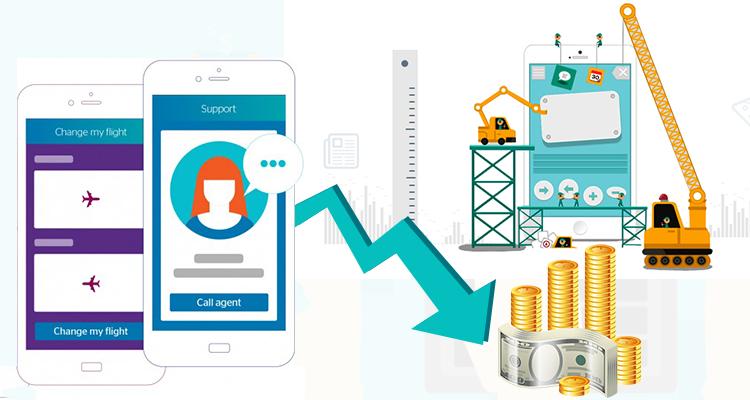‘Yesterday’s luxury is today’s necessity.’- This statement holds true for customized mobile apps as well. Enterprise-grade mobile app solutions can serve many objectives from branding to increasing sales, and therefore, entrepreneurs have started jumping on the mobile app bandwagon. But still, many startups and small companies refrain from opting for a mobile app because of a misconception related to app development cost.
The mobile app development services include all the aspects ranging from app development to deployment, and modification to marketing. It is, therefore, important for you to know how the mobile app development company decides the mobile app development cost. Though many factors contribute to determining the app development costing, we will discuss nine significant points here.
Top factors that impact mobile app development cost:
#1. Features
‘Features’ is the first and foremost factor to decide the app development cost. For example, Wine n Dine app facilitates the users to find, share, and save restaurants based on your location. It requires GPS and social media integration along with chat/messaging functionality for offering these facilities to the user. Other useful app features include a calculator, camera or photo gallery integration, loyalty programs, online reservation, wearable device integration, etc. It is obvious that the more features you want to include in your app, the more cost you need to pay.
#2. Operating Systems
Platforms or operating systems also play a significant role in deciding the development cost. Mobile app developers decide the price on the basis of the operating system or platforms you select. For example, if you select Android, Android apps take more testing time because a plethora of Android devices with different screen sizes are available. These days, cross-platform app development also gains ground for enabling you to get an app that can seamlessly run on both Android and iOS platforms.
#3. Database
Do you want to enable users to upload photos or videos, submit content, etc.? Does your app provide data that keeps on changing? If your answer to these questions is in ‘Yes’ then your app requires a database. For such an app, development time is high as the app requires configuration. Also, you need to consider hosting and storage costs for the database. In a way, database-based apps have higher development cost as compared to other simple apps.
#4. CMS
CMS (Content Management System) integration makes it possible to add, edit, or modify the company data or content. For example, you own an event management company and wants an app that can enable you to edit, delete, or add data on local events and other local information. You need a CMS rather than the database for serving this objective. It is because a CMS needs less technical knowledge to access as compared to the database. However, CMS integration has a separate cost depending on the CMS you choose.
#5. External Services
These days, many services provide simple and easy-to-integrate functions to add desired features in your app. Push notifications and analytics are examples of external services. Though integration of these external services takes less development time, most of these services are not free, and you need to pay extra bucks for their integration.
#6. Server Costs
An app with the database-related features like chat, online booking, etc. requires a server. As the cloud services are evolved, server space and usage are available for rent. It enables you to get rid of paying an upfront cost to purchase a server, but then, you need to consider the server costs during and after the development phase.
#7. User Authentication
This is an important feature, especially for enterprise apps. It is related to app security and requires dedicated efforts along with a cooperation between the app developers and enterprise system professionals. The development costs for the apps with user authentication feature is higher as compared to non-secure apps.
#8. Integration with Systems
It is important to integrate the customized app with your enterprise system. The integration enables your app to access and edit the enterprise data. But then, you have to pay for enterprise data access, third-party APIs and app modifications as an additional development cost.
#9. Customized Add-ons
The customer-centric apps require add-ons to enhance the UX and thereby boosting the RoI. In-app purchasing, social media integration, etc. are the examples of such add-ons. However, integration of custom add-ons is pricey and you need to consider it as a one-time investment while developing a mobile application.
And finally, the rule of thumb for mobile app development process. It is also known as a 25-50-25 rule. As per this rule, the first 25 percent involves initial stages of development like discovery, understanding business flow, and developing mockups for a screen. The second 50 percent includes design and development, and the final 25 percent involves full integration along with QA testing to make your app ready for deployment.
Here we have covered all the major aspects of app development that decide the cost. You need to consider factors like business requirements, targeted audience, and budget while planning for a customized business app.













No Comments